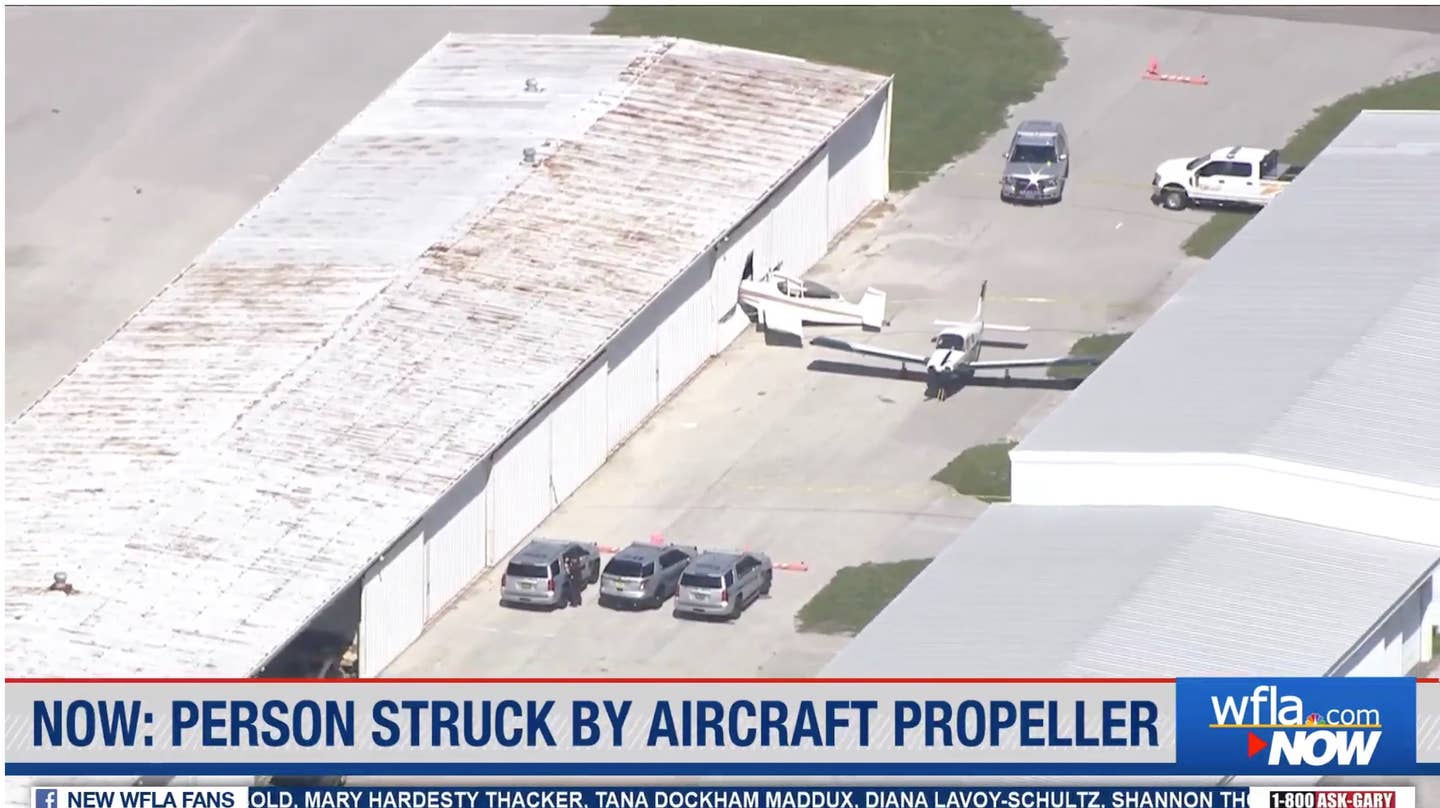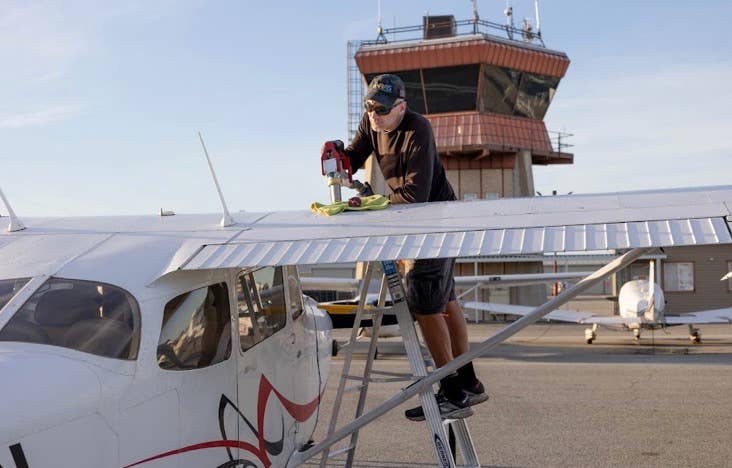Tie ‘er Down, Mate. Chocks, Too.
Propping is never, ever gonna be safe. Best you can do is tie the beast down so at least it won’t come after you.

Credit: WFLA.com
“Well, of course I expected you to think it was me. I would have been insulted and disappointed if you hadn’t.”
This was my immediate thought after I got a text and a couple of Facebook notifications Tuesday discreetly inquiring if it was me who took out a hangar door at Venice Tuesday while propping an airplane. No, it was not me. God protects idiots and drunks; it’s the smart ones who get into trouble.
The odd thing is, I was there just after this incident happened and on my way home, I drove by the hangar alleyway that the cops had roped off. The news people were outside the fence setting up cameras. By the time I got home, the world knew and there was even newscopter footage. Really? Of a propping runaway? Unfortunately, the pilot doing the propping was seriously injured, although he’s expected to recover, so that was a hook on a sloooooow newsday.
The details of this incident—which I do not know at the moment—really don’t matter much. What’s always been true is still true: A properly chocked and tied down airplane will not get away and flatten you no matter how awry propping might go. If you're slow of foot or just plain clumsy, it might whack you in the head, the arm, the leg or some other body part, but it won’t launch off in search of additional victims. It can still kill you.
So here, in an effort to be helpful, I regurgitate my periodic spiel about propping. It is dangerous. It has always been dangerous. It will always be dangerous. Without getting into ad nauseum review of whether to stand in front or back, propping can be done with acceptable risk. My definition of this is to always, with absolutely, positively no exceptions, chock both wheels and tie the tail. I do this no matter where I am and whether a qualified pilot is in the cockpit or not, which for me, usually isn’t the case.
Safety—or should I say survival?—is comprised of a lot of things, but one of them is a disciplined, habitual approach to mitigating things that can kill you. And so the friendly reminder about chocks and ties. My chocks for the Cub would be suitable for a 777; people have been known to giggle at them. I encourage such derision because it’s ever so much better than the alternative.
I’ll Take Aerodynamics for $50, Ethan
My friend Russ Still of Gold Seal Online Ground School corralled me into being a contestant on their new online game show called Prop Quiz. (Catchy, huh.) Having disabused my worried friends about culpability in propping, we shot the program Tuesday night. They’ve been doing this for a couple of months.
Such a thing has a high probability of being hopelessly lame or crushingly boring, but the boys have thought this one through. Thanks to some impressive technology, just the right production values and the effervescent hosting of Ethan Berg, I thought the program was creative, entertaining and quite watchable. It was fun to do from my end, and competing against two guys—Russ Roslewski and Chris Dunn, both active and accomplished instructors—I was happy not to embarrass myself.
It worth checking out. You can also see the previous episodes on Gold Seal’s YouTube channel.






